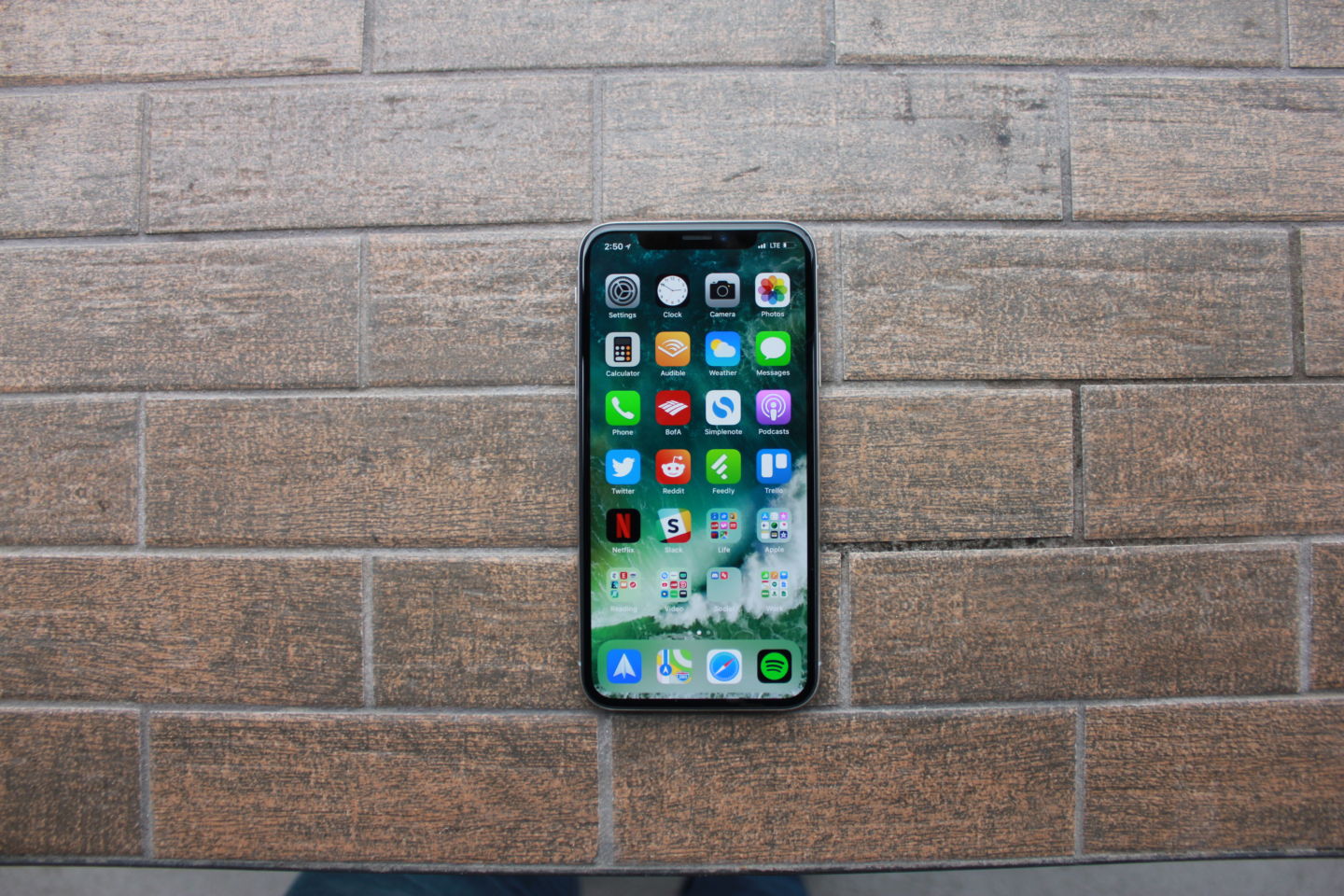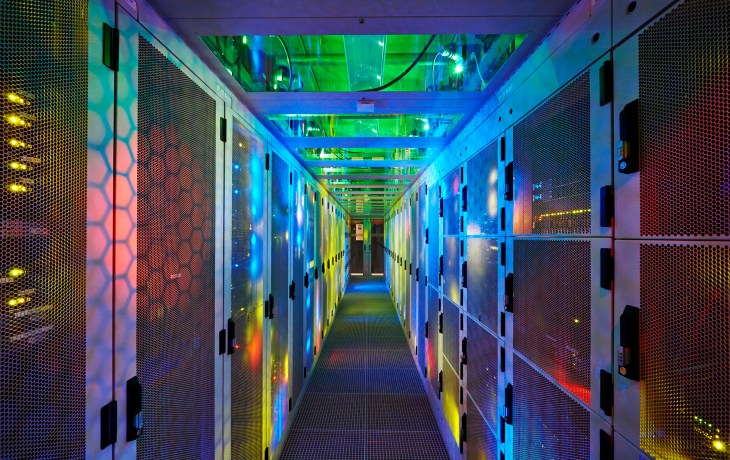Looks like the same dual 12-megapixel cameras as last year. Trust us, they’re not.
The brand new iPhone XS looks pretty much the same as last year's iPhone X on the outside.
So you'd be forgiven for thinking the dual 12-megapixel cameras are also the same. But looks can be deceiving: there are actually a few significant differences in the detailed specs and image processing that make a big difference in the quality of the actual shots.
The iPhone X took great photos. The XS shots are even better. (Don't forget, the XS also has exactly the same camera as the XS Max.)
IPHONE XS VS. IPHONE X SPECS
| iPhone XS | iPhone X | |
| Rear camera | Dual 12-megapixel | Dual 12-megapixel |
| Wide-angle lens | 26mm f/1.8 | 28mm f/1.8 |
| Telephoto lens | 51mm f/2.4 | 51mm f/2.4 |
| Optical image stabilization? | Yes, both rear cameras | Yes, both rear cameras |
| Digital zoom | 10x | 10x |
| Front camera type | TrueDepth 27mm f/2.2 | TrueDepth 30mm f/2.2 |
| Front camera resolution | 7-megapixel | 7-megapixel |
| Autofocus (rear camera) | Contrast, phase | Contrast, phase |
| Autofocus (front camera) | Contrast, phase | None |
| Min/Max ISO (rear camera) | 24/2304 | 22/2112 |
| Min/Max ISO (front camera) | 15/1440 | 19/1824 |
| 4K video | Yes (24/30/60 fps) | Yes (24/30/60) |
| Video extended dynamic range | Yes, up to 30fps | No |
| Stabilization on front camera | Yes (1080/720p) | No |
| Audio | Stereo recording | Mono recording |
These specs were pulled from the Halide app (US$5.99) which has a technical readout section that gives a breakdown on both cameras.
I took the iPhone XS and iPhone X to the sensory overload that is Candytopia in San Francisco, then around the city, to test the cameras in the real world. When reviewing the images on the phones and on a computer, I was genuinely surprised at the overall improvement in image processing on the XS.
All photos were taken on the default camera app with default settings and HDR turned on. Here's a breakdown of the main differences between the two phones. For the sake of brevity, I didn't focus on areas that remained pretty much unchanged such as slow motion video.
Portrait mode: More options on the iPhone XS
Both phones have portrait mode, but only the XS lets you adjust the blur -- or bokeh -- after the photo has been taken. (Samsung Galaxy phones have let you do this same thing for several years.)
Moving the depth control slider simulates changing the aperture of the lens. The wider the aperture (or lower the f-number), the more background blur in your shot.

A portrait taken on the iPhone XS.
Apple has made depth control available on all portrait mode photos you take on the front and rear cameras. You can read more about how depth control works in this article.
Because the effect is generated through image processing, it doesn't always have the same qualities as "creamy" bokeh from a DSLR lens. It just increases the blur around your subject.
That being said, the effect can look really good -- like when your subject is far enough away from the background and you choose the widest simulated aperture of f/1.4. But in other situations, the effect can look a little synthetic.
If you don't make any adjustments to the depth-control slider and just leave portrait photos as-is, both phones produce similar-looking images. The XS captures a bit more detail, as you can see in the image below (focus on the hair), but images from the X have a bit more contrast overall.
Smart HDR levels up from the iPhone X
A new HDR setting on the iPhone XS called Smart HDR helps retain more shadow and highlight detail in photos, according to Apple.
It actually does make a difference when it's turned on. Note that it is on by default in Settings > Camera.
The XS with Smart HDR retains more highlight detail than the X, especially in situations like the photo below. Take a look at the detail retained in the window frame.
For portraits, Smart HDR gives a much more pleasing effect on faces. It smooths out and softens highlights so lighting looks even. It's like having a personal light box. The same photo from the iPhone X shows more harsh and blown-out highlights.
But even with Smart HDR turned off, the iPhone XS does appear to have slightly more dynamic range than the X. Here's the same image from the XS (with Smart HDR off) and the X (with its regular HDR on).
The selfies you'll take from the iPhone XS' TrueDepth camera also get an upgrade. Rather than the blown-out backgrounds and crunchy high-contrast look from the X, selfies look more flattering on the XS. In some photos, the X decided my brown hair looked more steely gray when taking selfies with light coming in from overhead.
General photos
In good lighting conditions, especially when taking photos outdoors, you won't notice a huge difference between photos from the XS and the X. To my eye, colors are slightly more saturated on the older iPhone X.
The exception is photos shot into the sun, bright sky or bright lights. In these cases, the Smart HDR function can help avoid blown-out highlights -- but this can also make colors look more subdued than those on the X.
When looking at photos on the phone screens with TrueTone turned on, images do look more true to life on the newer XS than they do on the X. (TrueTone adjusts the screen based on the ambient light, so colors look consistent.)
Of course, the screen you're viewing these images on will also make a difference to how these shots look. If you're viewing mostly on the phone screen, most people I showed sample photos to thought the iPhone XS was closer to the real world. But if you're one to print photos or save them as desktop wallpapers, you may prefer the higher contrast look straight from camera from the iPhone X.
Low light photos
Thanks to a wider pixel size on the XS camera sensor (1.4 microns vs. 1.1), the newer phone should have an advantage in low-light situations, at least on paper. Larger pixels generally mean they can collect more light.
In the real world, the pixel pitch combined with Smart HDR helps create more even and balanced low light photos on the XS than those from the X.
Notice the lights in the photo above: they look like glowing blobs on the photo from the X, while on the XS they have more definition and actually look like lights.
I've taken lots of low-light photos on each phone, and iPhone XS shots typically have less noise overall than those from the iPhone X -- not a huge difference, but enough for me to prefer the look of photos from the iPhone XS.
Video is nicer on the iPhone XS
According to Apple, the XS shoots with an extended dynamic range in videos up to 30fps.
Like Smart HDR for photos, you'll notice this most on videos when you're shooting scenes with challenging lighting conditions: think light pouring in from a window into a darkened room, or a light bulb in the background of your shot. On the XS, these highlight details are rendered more faithfully than the X.
See some examples from both phones in the video embedded on this page.
When it comes to audio, the XS records in stereo. Listen to the same video clipthrough headphones and you'll easily hear the richer, stereo audio over the mono audio channel on the X.
Is the iPhone XS camera worth the upgrade?
Objectively, the iPhone XS takes better photos (and videos) than the iPhone X. But unless you're holding the phones side-by-side, iPhone X owners won't notice a huge difference.
Some people I showed photos to on both phones preferred the higher-contrast look from the iPhone X photos. Others chose the XS every time. Again, the most notable improvements come if and when you're in a high-contrast environment with Smart HDR turned on. Shooting in sun-drenched daylight, or night shots interspersed with bright lights, are where you'll likely see the biggest improvements on the XS/Max over the 2017 iPhone X.
The iPhone XS is overall an incremental update over the iPhone X, so unless you're on a yearly upgrade program, I wouldn't recommend shelling out for a new iPhone XS just for the camera. Ideally, I'd love to see some software tweaks come to the iPhone X so HDR processing is a little closer to Smart HDR on the XS.
But for owners of older iPhones like the 6 or 7, the camera update is a significant jump. We haven't yet tested the upcoming iPhone XR, which has many of the same camera features as the XS but with a single lens. Stay tuned for that, plus more comparisons with phones from Samsung and the yet-to-be-announced Google Pixel 3.





No comments:
Post a Comment